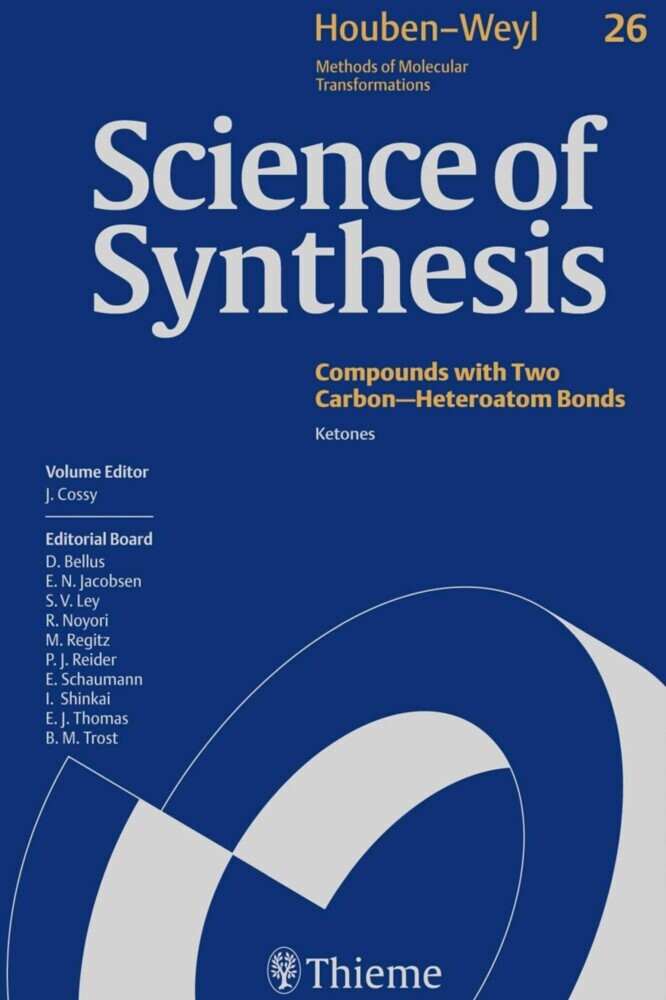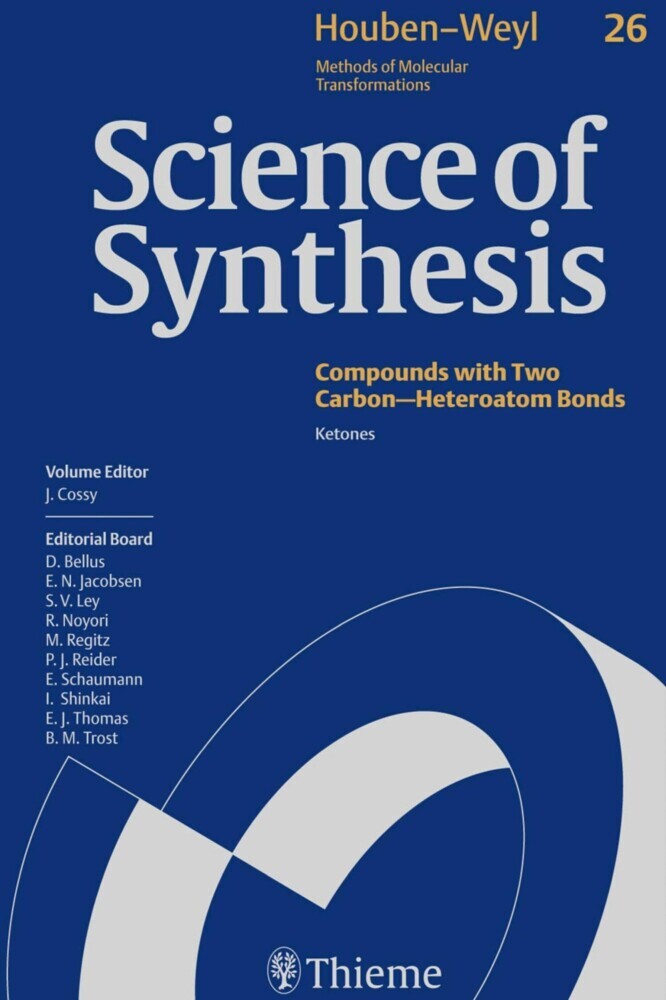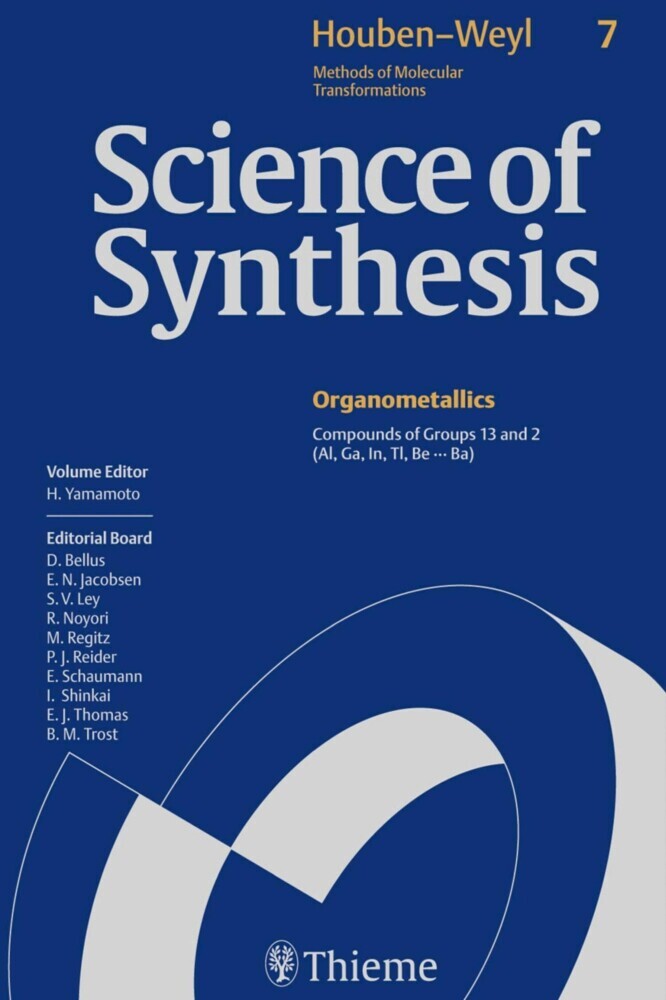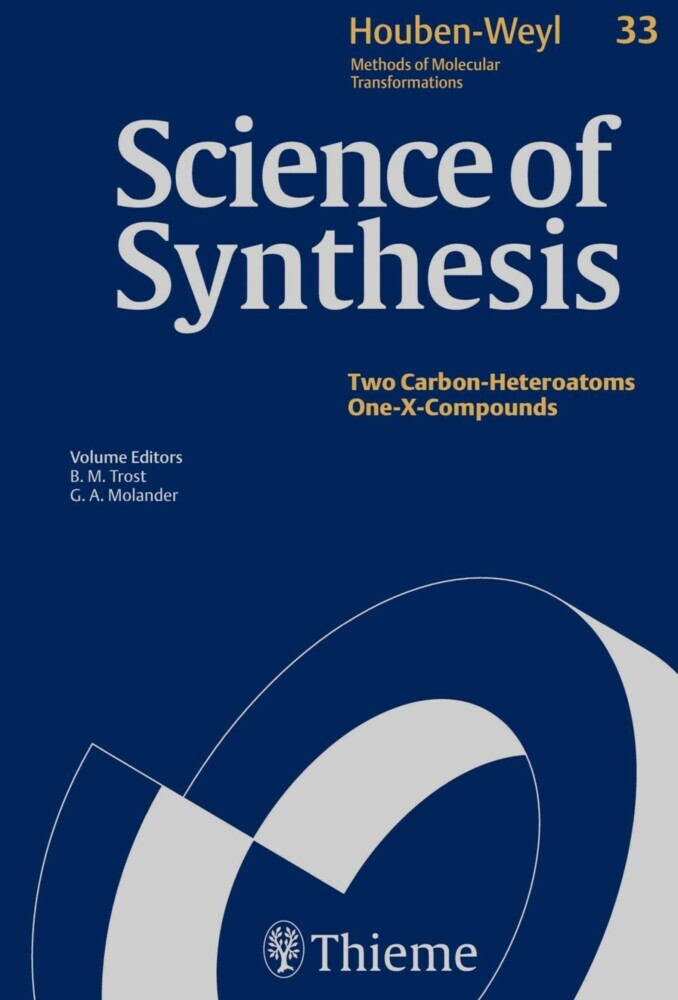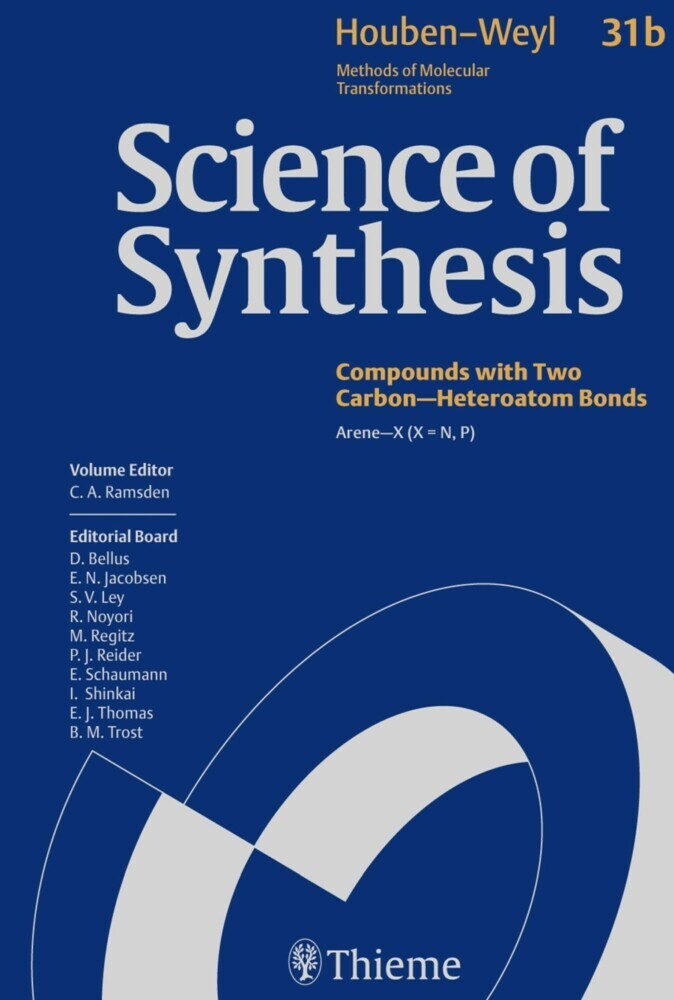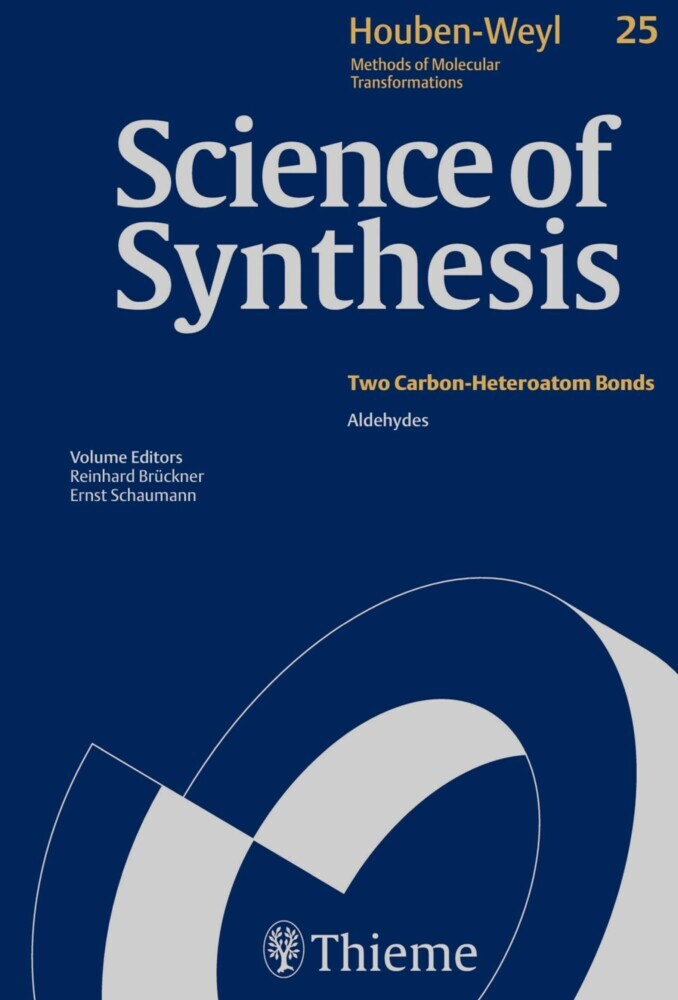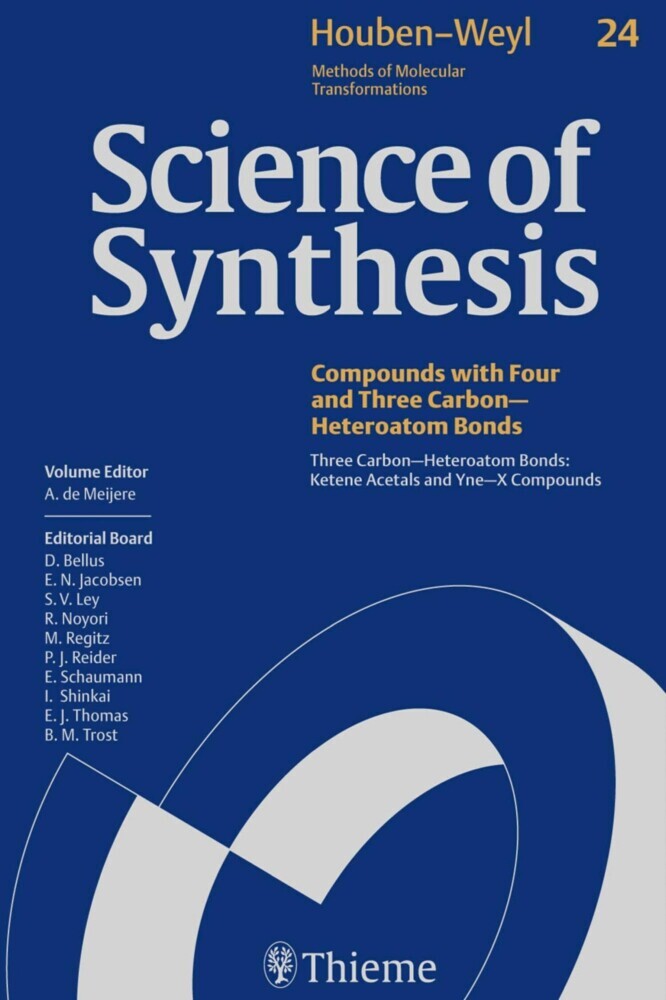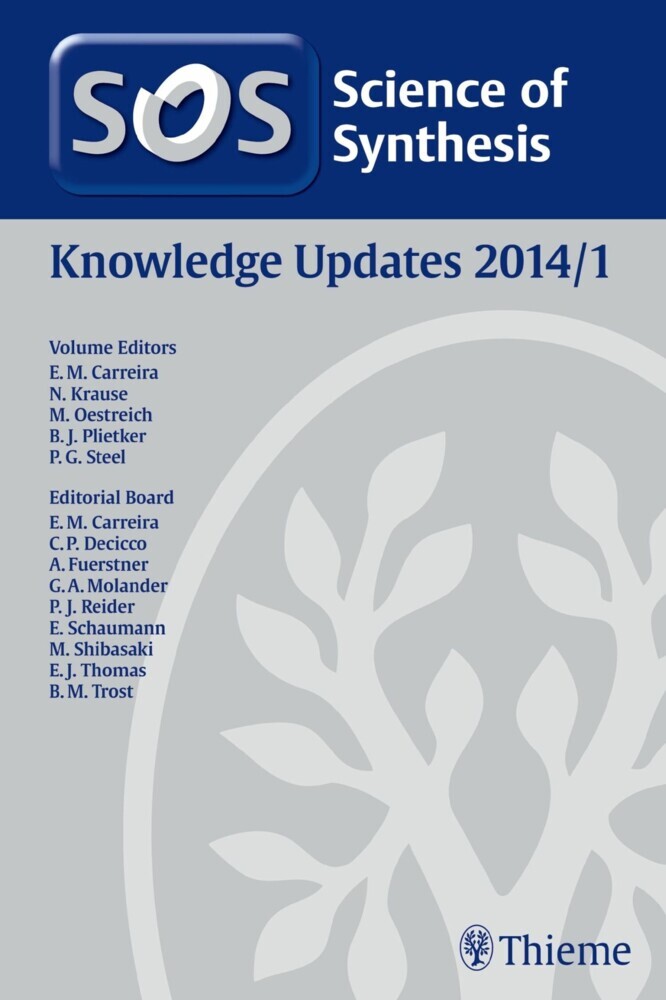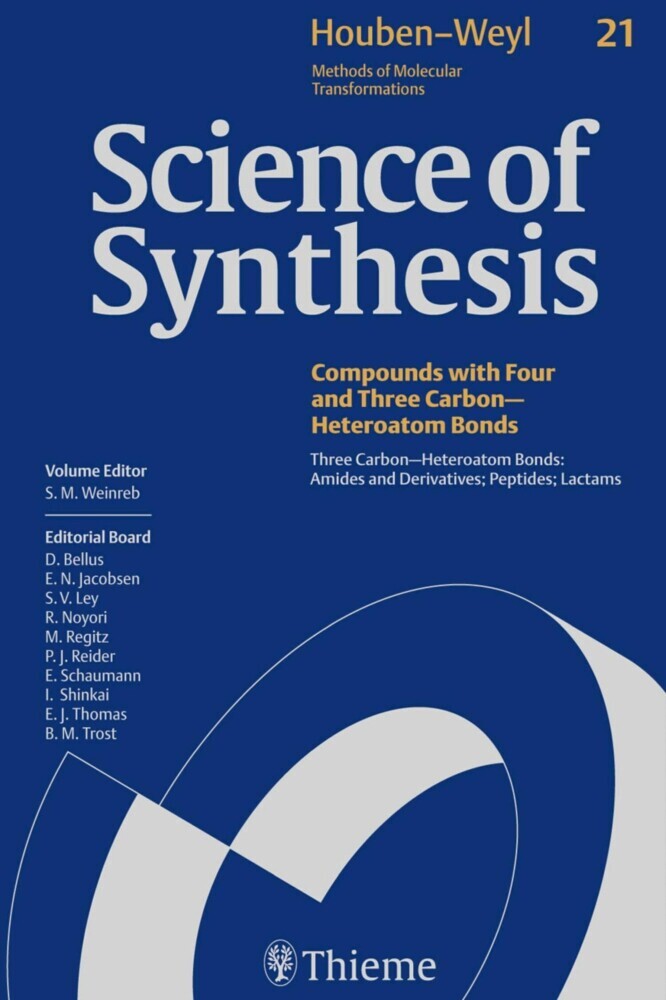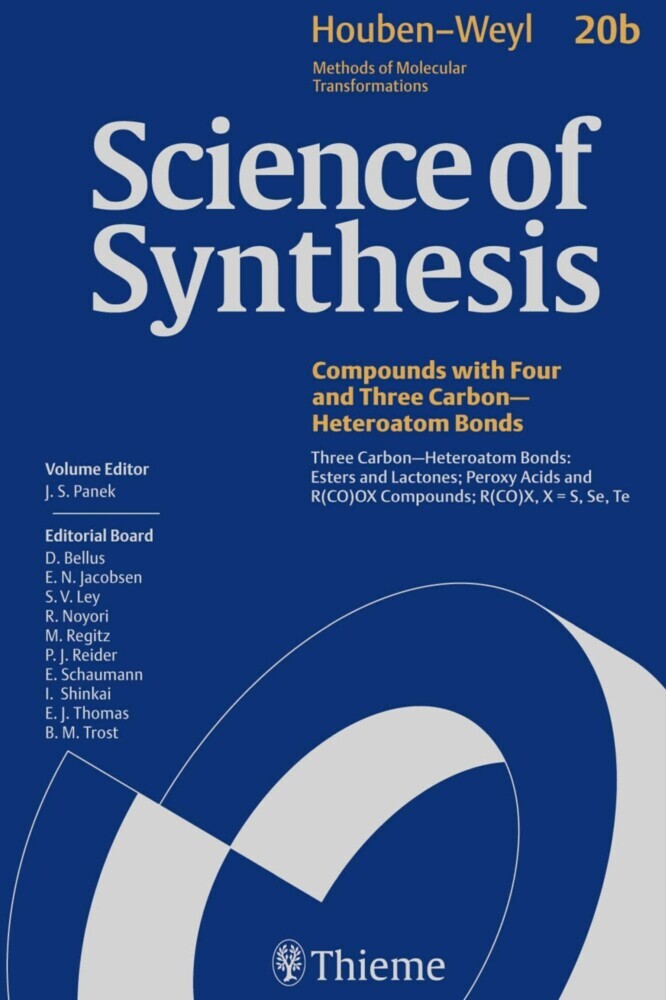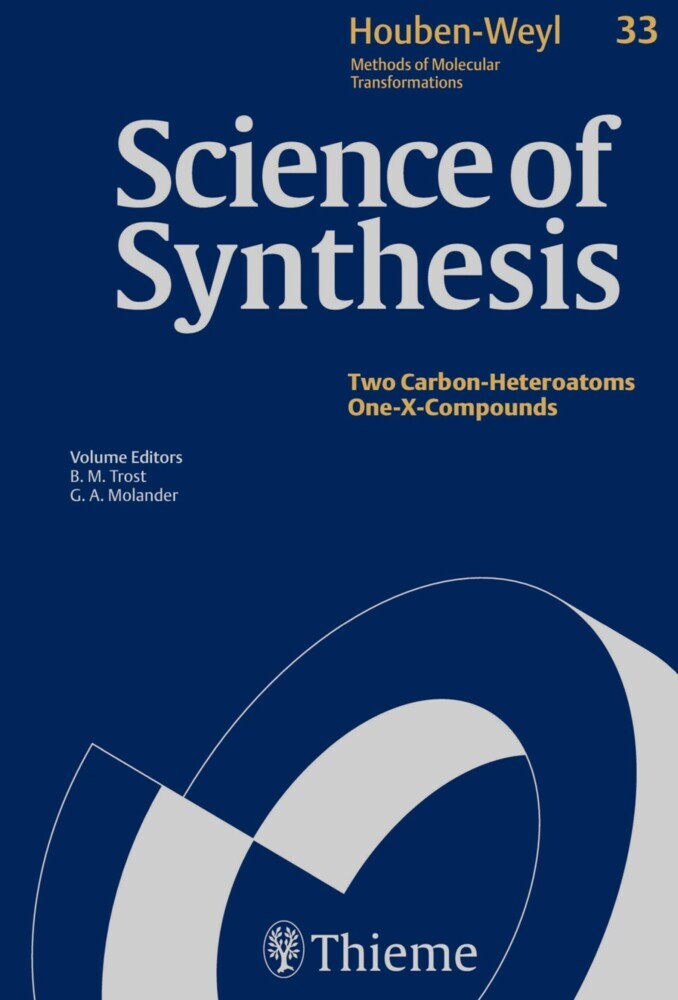Science of Synthesis: Houben-Weyl Methods of Molecular Transformations Vol. 26
Turning Information into Knowledge
Science of Synthesis: Houben-Weyl Methods of Molecular Transformations is the entirely new edition of the acclaimed reference series Houben-Weyl, the standard synthetic chemistry resource since 1909. This new edition is published in English and will comprise 48 volumes published between the years 2000 and 2008.
Science of Synthesis is a quality reference work developed by a highly esteemed editorial board to provide a comprehensive and critical selection of reliable organic and organometallic synthetic methods. This unique resource is designed to be the first point of reference when searching for a synthesis strategy.
- Contains the expertise of presently 400 leading chemists worldwide.
- Critically evaluates the preparative applicability and significance of the synthetic methods.
- Discusses relevant background information and provides detailed experimental procedures
For full information on the Science of Synthesis series, visit the Science of Synthesis Homepage Series Editors: D. Bellus, S. V. Ley, R. Noyori, M. Regitz, E. Schaumann, I. Shinkai, E. J. Thomas, B. M. Trost, P. J. Reider.
Cossy
1;Science of Synthesis - Volume 26: Ketones;1
1.1;Title page;3
1.2;Imprint;5
1.3;Preface;6
1.4;Volume Editor's Preface;8
1.5;Overview;10
1.6;Table of Contents;12
1.7;Introduction;46
1.8;26.1 Product Class 1: Aliphatic and Alicyclic Ketones (Excluding Cyclobutanones and Cyclopropanones);58
1.8.1;26.1.1 Synthesis by Oxidation of Heterosubstituted Alkanes;84
1.8.1.1;26.1.1.1 Oxidation of Halides;85
1.8.1.1.1;26.1.1.1.1 Method 1: With Sodium Dichromate or Sodium Periodate;85
1.8.1.1.2;26.1.1.1.2 Method 2: With Dimethyl Sulfoxide;85
1.8.1.1.3;26.1.1.1.3 Method 3: With Nitrogen--Oxygen Compounds;86
1.8.1.2;26.1.1.2 Oxidation of Secondary Alcohols;87
1.8.1.2.1;26.1.1.2.1 Method 1: By Hydrogen Elimination;87
1.8.1.2.2;26.1.1.2.2 Method 2: With Chromium(VI) Compounds;88
1.8.1.2.2.1;26.1.1.2.2.1 Variation 1: With Chromic Acid in Aqueous Solution;89
1.8.1.2.2.2;26.1.1.2.2.2 Variation 2: With Chromic Acid in Acetic Acid;89
1.8.1.2.2.3;26.1.1.2.2.3 Variation 3: With Chromic Acid in Acetone;91
1.8.1.2.2.4;26.1.1.2.2.4 Variation 4: With Chromic Acid in a Two-Phase System;92
1.8.1.2.2.5;26.1.1.2.2.5 Variation 5: With Chromium(VI) Oxide in Pyridine;94
1.8.1.2.2.6;26.1.1.2.2.6 Variation 6: With Halochromates;96
1.8.1.2.3;26.1.1.2.3 Method 3: With Manganese Compounds;98
1.8.1.2.3.1;26.1.1.2.3.1 Variation 1: With Permanganate;98
1.8.1.2.3.2;26.1.1.2.3.2 Variation 2: With Manganese(IV) Oxide;100
1.8.1.2.4;26.1.1.2.4 Method 4: With Other Metal Compounds;103
1.8.1.2.4.1;26.1.1.2.4.1 Variation 1: With Iron Compounds;103
1.8.1.2.4.2;26.1.1.2.4.2 Variation 2: With Ruthenium(VIII) Oxide;104
1.8.1.2.4.3;26.1.1.2.4.3 Variation 3: With Copper(II) Salts;1051.8.1.2.5;26.1.1.2.5 Method 5: Oxidation of Secondary Alcohols with Halogen Compounds;105
1.8.1.2.5.1;26.1.1.2.5.1 Variation 1: With Hypofluorous Acid;105
1.8.1.2.5.2;26.1.1.2.5.2 Variation 2: With Hypochlorite and Related Oxidants;106
1.8.1.2.5.3;26.1.1.2.5.3 Variation 3: With N-tert-Butylbenzenesulfinimidoyl Chloride;109
1.8.1.2.5.4;26.1.1.2.5.4 Variation 4: With Bromo Compounds;110
1.8.1.2.5.5;26.1.1.2.5.5 Variation 5: With Periodate;112
1.8.1.2.5.6;26.1.1.2.5.6 Variation 6: With Organic Iodine(V) Compounds;113
1.8.1.2.5.7;26.1.1.2.5.7 Variation 7: With Organic Iodine(III) Compounds;116
1.8.1.2.6;26.1.1.2.6 Method 6: Oxidation by Molecular Oxygen;119
1.8.1.2.6.1;26.1.1.2.6.1 Variation 1: With Ruthenium-Based Catalysts;119
1.8.1.2.6.2;26.1.1.2.6.2 Variation 2: With Cobalt-Based Catalysts;120
1.8.1.2.6.3;26.1.1.2.6.3 Variation 3: With Vanadium-Based Catalysts;121
1.8.1.2.6.4;26.1.1.2.6.4 Variation 4: With Copper-Based Catalysts;123
1.8.1.2.6.5;26.1.1.2.6.5 Variation 5: With Palladium-Based Catalysts;124
1.8.1.2.6.6;26.1.1.2.6.6 Variation 6: With Other Reagents;127
1.8.1.2.7;26.1.1.2.7 Method 7: Oxidation with Hydrogen Peroxide;128
1.8.1.2.8;26.1.1.2.8 Method 8: Oxidation with Hydroperoxides and Peracids;129
1.8.1.2.8.1;26.1.1.2.8.1 Variation 1: With tert-Butyl Hydroperoxide;130
1.8.1.2.8.2;26.1.1.2.8.2 Variation 2: With Peracids;131
1.8.1.2.9;26.1.1.2.9 Method 9: Oxidation with Dioxiranes;133
1.8.1.2.10;26.1.1.2.10 Method 10: Oxidation with Dimethyl Sulfoxide;134
1.8.1.2.11;26.1.1.2.11 Method 11: Oxidation with Peroxomonosulfate;140
1.8.1.2.12;26.1.1.2.12 Method 12: Oxidation with Nitrogen Compounds;141
1.8.1.2.12.1;26.1.1.2.12.1 Variation 1: With Organic Oxoammonium Salts;141
1.8.1.2.12.2;26.1.1.2.12.2 Variation 2: With N-Oxides;143
1.8.1.2.12.3;26.1.1.2.12.3 Variation 3: With Other Nitrogen-Based Oxidants;143
1.8.1.2.13;26.1.1.2.13 Method 13: Oppenauer Oxidation;144
1.8.1.2.14;26.1.1.2.14 Method 14: Dehydrogenation with Alkenes and Alkynes;147
1.8.1.2.14.1;26.1.1.2.14.1 Variation 1: With Alkenes;148
1.8.1.2.14.2;26.1.1.2.14.2 Variation 2: By Isomerization of Allyl Alcohols;148
1.8.1.2.14.3;26.1.1.2.14.3 Variation 3: By Isomerization of a-Hydroxyalkynes
;149
1.8.1.2.15;26.1.1.2.15 Method 15: Other Methods;150
1.8.1.3;26.1.1.3 Oxidation of Sec
Silviu Balaban, Teodor
Bellus, Daniel
Cossy, Janine
| ISBN | 9783131781918 |
|---|---|
| Artikelnummer | 9783131781918 |
| Medientyp | E-Book - ePUB |
| Copyrightjahr | 2014 |
| Verlag | Georg Thieme Verlag KG |
| Umfang | 1422 Seiten |
| Sprache | Englisch |
| Kopierschutz | Digitales Wasserzeichen |

